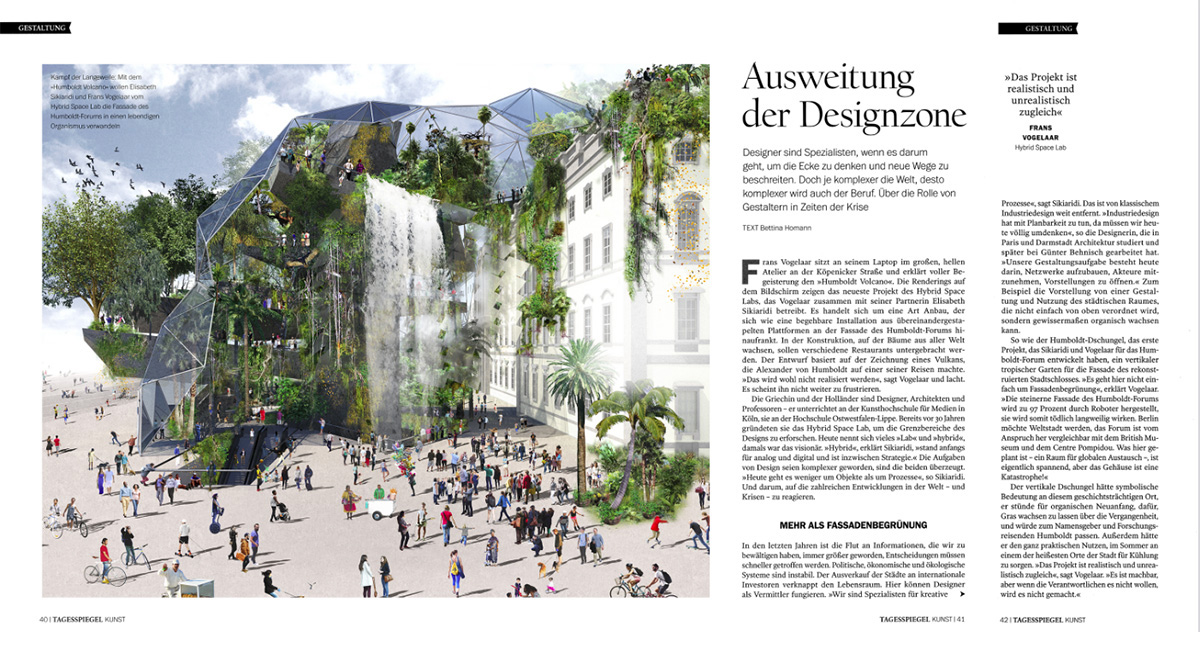The special art edition of the German newspaper DER TAGESSPIEGEL Kunst 2016, which appears during the 9th Berlin Biennale for Contemporary Art, publishes an article by Bettina Homann, an interview on the projects Humboldt Volcano and Humboldt Jungle.
Publication, Bettina Homann @ DER TAGESSPIEGEL Kunst 2016, Berlin, 2 September 2016
Hybrid
Hybrid as a design concept stood initially, in the beginning of the 1990ies, for the fusion of the analogue (the physical) and the digital (media) domain. Today it has become a general design strategy. The tasks of design are increasingly complex. Today it is less about objects and more about processes. It is about responding to social, political and economic developments – and to crises. Industrial design is closely connected to predictability and to the concept of planning – this has to be radically reconsidered. The design tasks today are more about opening mindsets and situations, involving the players and building networks. In this process designers can act as mediators. We are specialists for creative processes, an expertise we can bring in a variety of situations.
Excerpt
related PROJECTS
related PRESS
